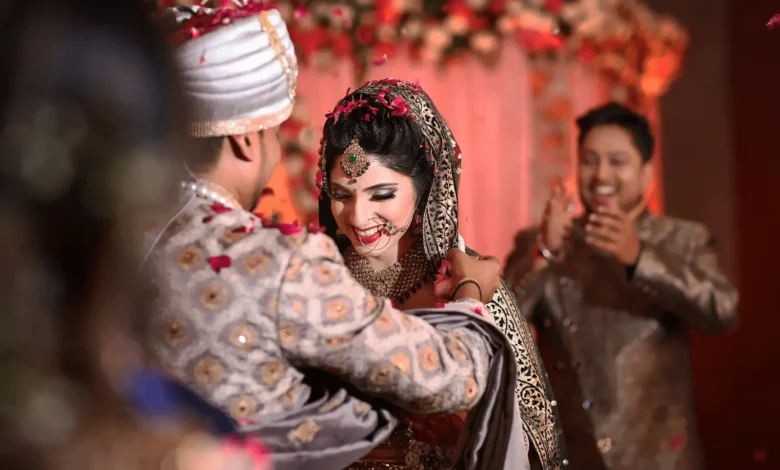
In Indian culture, love and marriage are two seeds that go hand in hand on the grounds of culture and systems. A TNS survey carried out in India in 2018 among 160000 families revealed that 93% of married Indians had an arranged marriage, while only 3% had a ‘love marriage.’ This denotes that the practice of arranged marriage is still deeply rooted in India, despite its gradual decline in recent years, primarily among the urban and young.
Key Love Marriage Statistics India
- 93% of married Indians had an arranged marriage (2018 survey)
- 3% had a “love marriage”
- 2% described their marriage as a “love-cum-arranged marriage”
- Fewer than 10% of urban Indians said anyone in their family had married outside their caste (2014 survey)
- Only 5% of urban respondents said anyone in their family had married outside their religion (2014 survey)
Prevalence of Arranged Marriages
The examples reveal how arranged marriage is still relevant within Indian culture today. Research conducted on over 160000 households in India through the survey taken in the year 2018 revealed that the percentage of married couples who had arranged marriages was 93%. However, according to the interview, only 3% had a ‘love marriage.’ In comparison, 2% described their marriage as a ‘love-cum-arranged marriage,’ which means that though the families selected the bride and groom, the couple also consented to it willingly.
Caste and Religious Barriers
Caste and religion still play vital roles in Indian marriages, as Indians choose their partners based on caste and religion. Apollinaris, an urban Indians and marriage survey held in 2014, indicated that below 10% of the respondents expressed that anyone in their family ever married across caste, and below 5% said that their family was involved in interfaith marriages.
Stated vs. Revealed Preferences
The young generations in India appear to have a higher level of acceptance regarding marriage outside their castes, but ratinating and practicing are two different issues. This shows how modern-day Indian women wish to marry across the caste divide. Still, once contacted through matrimonial websites, half of the representatives who initially responded positively by affirming that they wanted to marry a boy from a different caste changed their decision and firmly expressed their preference for boys from their caste when they had the choices explained to them.
Discrimination Against Dalit Grooms
Gender also came out clearly as another factor, as it highlighted discrimination against prospective Dalit grooms. This shows that even when prospects for marriage were similar, they were done based on salary, other attributes, qualifications, and caste, and even where prospects were similar, a prospective Dalit groom never saw a prospect of a bride contacting him, showing the deep-rooted caste bias.
Consenting Couples and Legal Challenges
The artistic representation of rape as a violent act perpetrated by strangers on random women is misleading, as a survey of about 590 rape cases tried before the district courts of Delhi in 2013 showed that 40 percent of the accused were intimate partners or spouses. Most of these cases involved cross-caste or cross-Religious relationships, where the parents, mostly those of the woman, filed a complaint of abduction /rape against the partner; such cases drew much social prejudice against such relationships.
Impact of social media
From the abovementioned cases, technology and social media have inevitably affected how love and marriage are viewed and lived in the country. Appropriate technologies such as online dating and social networking sites have offered new opportunities to find and embark on romantic relationships in ways that might not have been available before. Also, with the improvement in technology and the internet, the availability of wedding planning websites, blogs, and other materials has made planning love marriages easier and more convenient for couples.
Conclusion
The decision of who to marry and when remains a classical cultural practice deeply ingrained in India; however, the presented results indicate a transitional change where more and more people are opting for love marriages, especially the young urban population of India. However, the culture and conventional stereotypes around the inter-caste and the inter-religious relationships are present, which creates problems and conflict. The growing trend of tech-based or internet-based services in wedding planning suggests a trend of modernity in the process while retaining many traditional features. The future development of India is hard to predict; however, the role of relationships, love, marriage, and norms in organizing interpersonal relations will remain vital for the formation of unions in the country for years to come.



